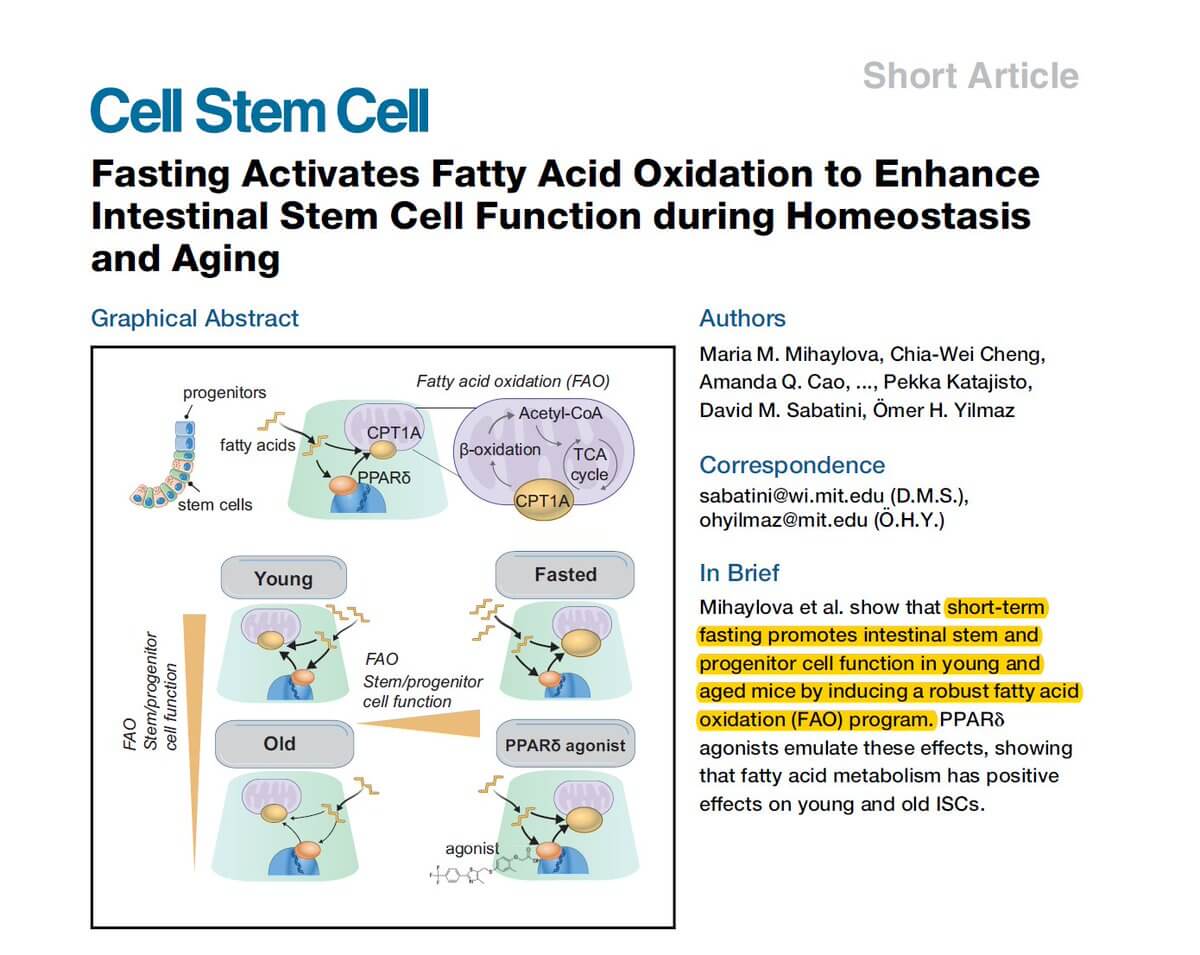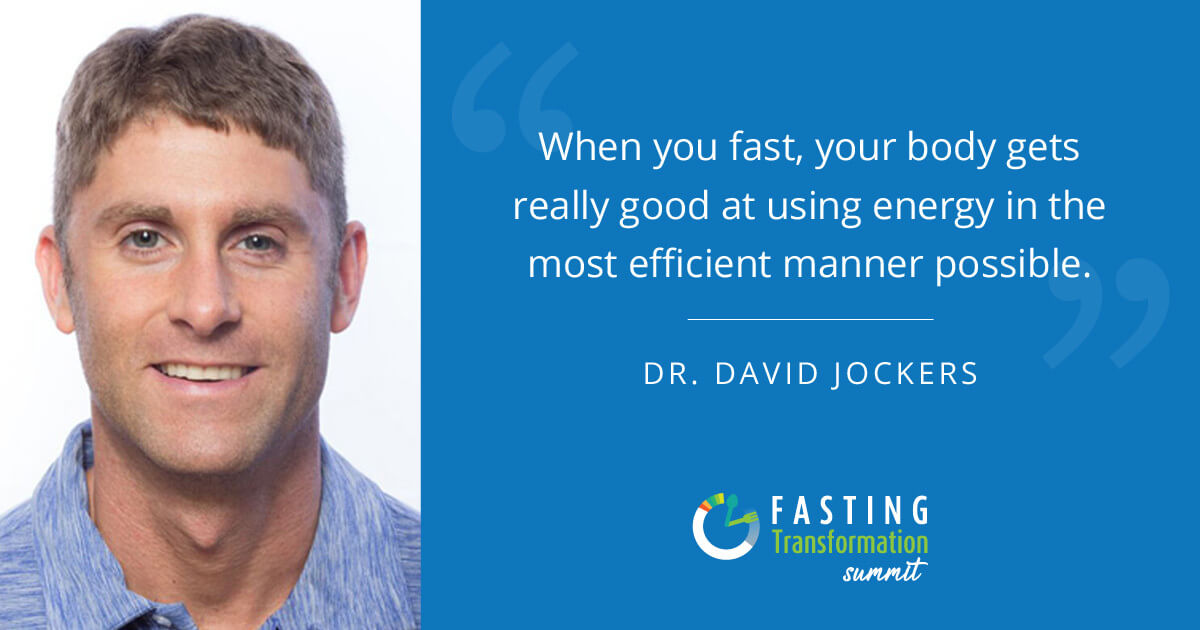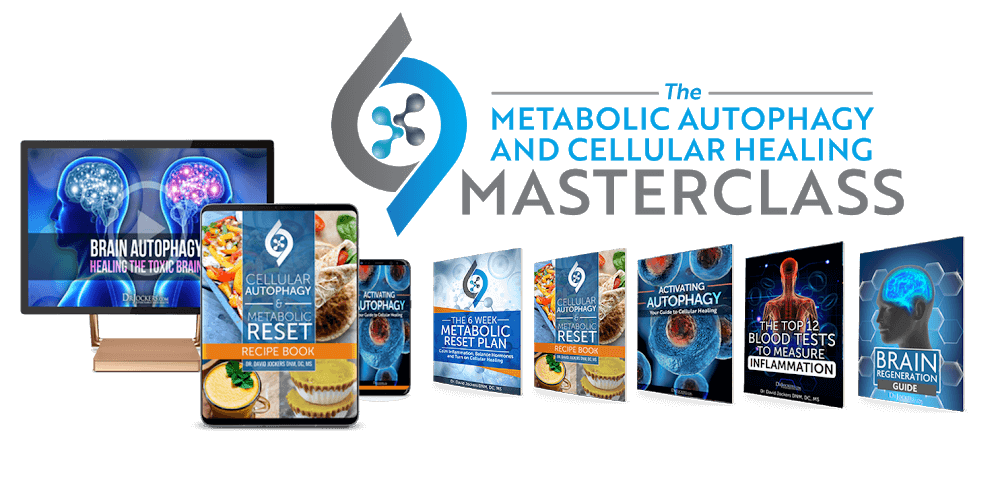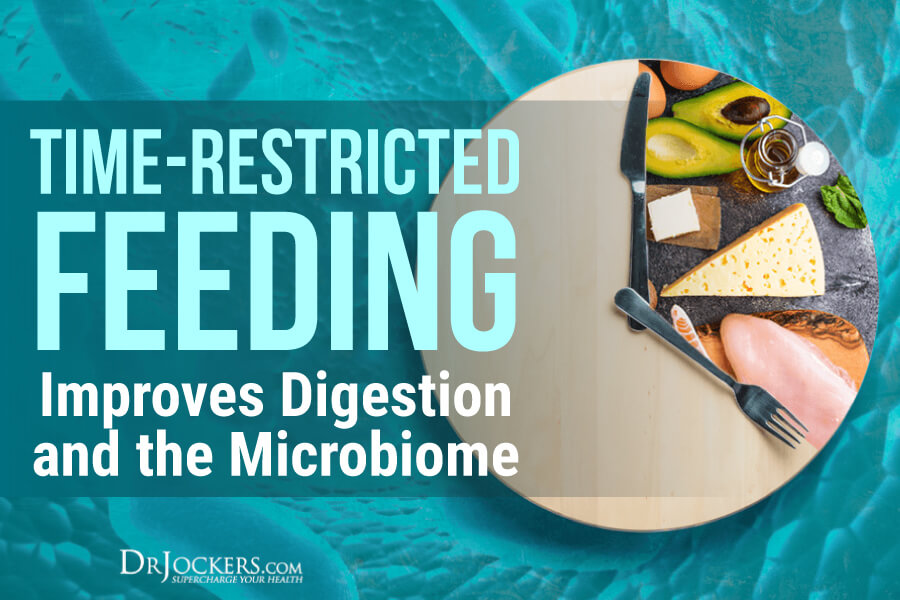 Time Restricted Feeding Improves Digestion and The Microbiome
Time Restricted Feeding Improves Digestion and The Microbiome
Time-restricted feeding is an increasingly popular way of eating. It is a form of daily intermittent fasting with a limited eating window of 4 to 12 hours. Time-restricted eating offers a number of health benefits, including improving your digestion and microbiome health.
In this article, you will understand what time-restricting feeding is. You will learn more about the benefits of time-restricted feeding on your digestion. I will share some of the top time-restricted feeding regiments and explain how to combine time-restricted feeding with partial fasting.
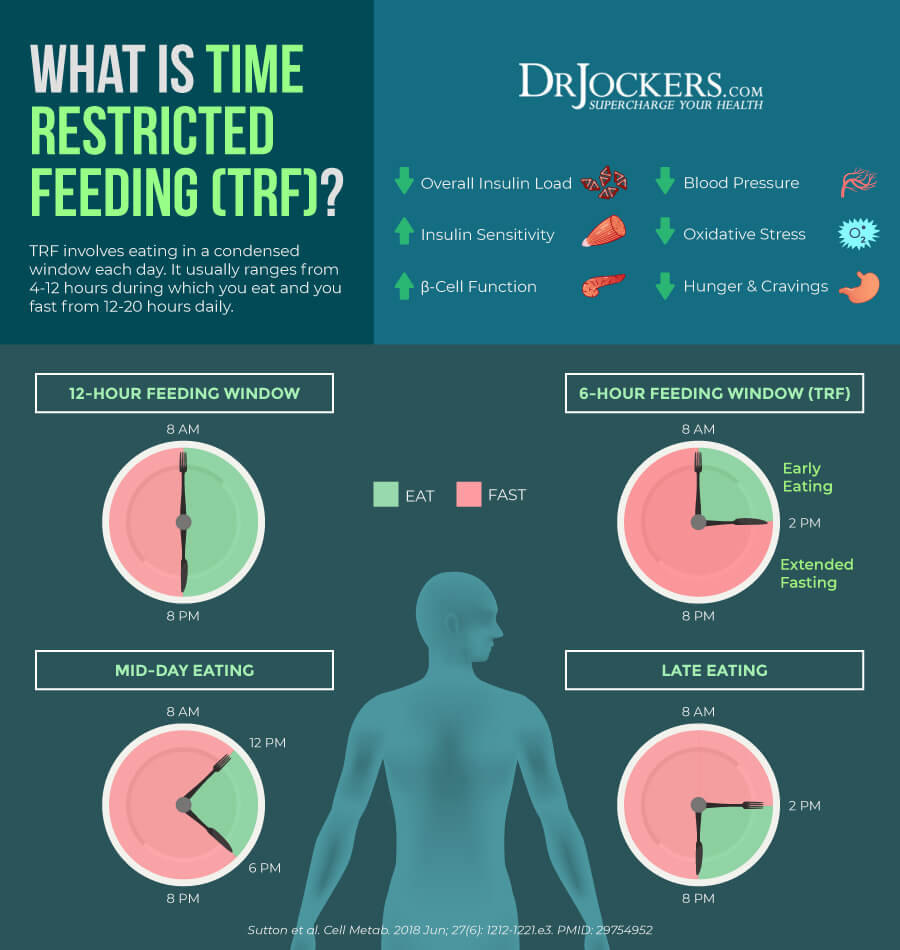
What is Time Restricted Feeding
Time restricted feeding (TRF) is an eating strategy based on the timing of your meals. It is a form of daily intermittent fasting regiment during which your eating window is compressed and limited.
Most people who practice TRF tend to eat during a 4 to 12 hour eating window during the day and fast the rest of the day for the remaining 12 to 20 hours, including overnight. However, the time frame can vary from person to person based on their preference, schedule, personal health, lifestyle, and goals.
When you practice time-restricted feeding, instead of restricting calories, you are restricting the amount of time you spend on eating. Time-restricted feeding, however, may help to lower your food and calorie intake and aid weight loss without counting calories. It may also encourage you to be more conscious of your food choices and make nutrient-dense, healthy choices easier.
Outside of your feeding window, you cannot consume any calories. This means saying no to calorie-rich smoothies or low-calorie snacks as well. It is important, however, that you stay hydrated, and drink plenty of water during this time. Herbal tea, and in some cases, unsweetened coffee is also allowed.

What Is The Microbiome
On the microscopic level, your body is full of trillions of microorganisms, also called microbes or microbiota. It is a bustling city of invisible bugs, including bacteria, viruses, fungi, and parasites coexisting in your body. Most of these microbes are found in your small and large intestine, however, they are also found throughout the body.
This network of microbiota is your microbiome. Your microbiome is essential for your health. It plays a critical role in supporting your organs and daily bodily functions.
Each person has a unique microbiome. While it is first determined by your DNA, it changes throughout your life. You were first exposed to microorganisms as an infant through the birth canal and breast milk. Later and throughout your life, your diet, lifestyle, and environmental exposures helped to develop your microbiome to what it is today.
Your microbiome is a network of various microorganisms. Since your microbiome affects your entire body and overall health, it is critical that you have a healthy and balanced microbiome. An overgrowth of unhealthy bacteria, fungi, viruses, and parasites can lead to chronic systemic inflammation, gut imbalances, vulnerability to illness, chronic pain, and chronic health problems. By developing a healthy diet and lifestyle, you can improve your microbiome and create a necessary balance in your gut flora (1, 2).

How Time Restricted Feeding Improves The Microbiome
Having a balanced microbiome is very important for your digestion and overall health. Time-restricted feeding may be a great way to improve your microbiome. Let’s see how.
Takes Stress Off The Digestive System
Your digestive system is a hard-working system. However, if your digestive system is constantly busy digesting an on-going food supply, it can get overwhelmed. This constant work can drain energy from important processes, including repair, rejuvenation, and healing.
TRF can help to take stress off the digestive system, allowing time for healing and improving digestion as a result. Research has shown that TRF may improve your digestive health, aid weight loss, reduce inflammation, and improve metabolic health (3).

Reduces Inflammation in the Gut
Inflammation is the underlying cause of most disease. Since your gut is connected to all areas of your body and health, gut inflammation is particularly problematic and may increase the risk of pain and disease. Research has shown that TRF may reduce inflammation in the gut.
According to a study on Ramadan fasting, time-restricted feeding may lead to positive changes in your gastrointestinal physiology. Sixty patients with irritable bowel disease (IBD) experienced a reduction of symptoms of their ulcerative colitis and lower levels of depression and anxiety after time-restricted feeding and fasting (4).

Activates Stem Cells in the Intestinal Lining
Stem cells are special cells that can develop into various types of cells and repair damaged tissue. Research has shown that time-restricted feeding may active stem cells in the intestinal lining.
According to a recent study, fasting or time-restricted feeding may enhance intestinal stem cell function in young and aged mice only after 24-hours of fasting. Though more research is needed to understand this mechanism, these results may indicate that time-restricted feeding may be a beneficial strategy for enhancing intestinal regeneration (5, 6).
Improves Microbiome Diversity
A healthy and strong microbiome depends on the richness of its microbiome diversity. Having a rich and diverse microbiome of a large variety of beneficial microbes is essential for a balanced, stable, and strong gut health and immune system. Research has shown that time-restricted feeding may improve microbiome diversity.
It has also been found that weight reduction may benefit microbiome diversity. To understand this better, one pilot study wanted to understand the potential benefits of time-restricted feeding and probiotic supplementation on the microbiome. They examined a group of obese subjects and their response to one week of fasting and six weeks of probiotic supplementation.
The results observed an increase in microbial diversity as a result of a combination of fasting and probiotics. Results indicate that while time-restricted feeding may help to diversity your microbiome, using it in combination with probiotic supplementation may be the best way to go (7).
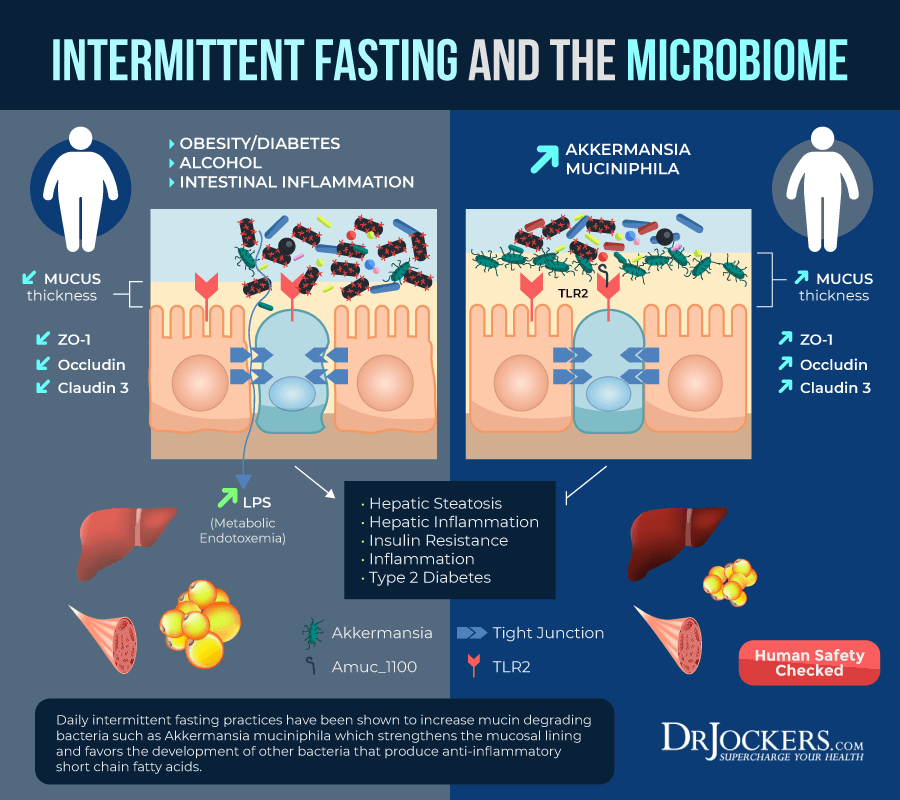
Increases Healthy Bacteria
While having a diverse microbiome is important, it is also critical that you have plenty of good bacteria for a healthy gut flora balance. Research has shown that time-restricted feeding may increase healthy bacteria in your gut.
Ramadan normally involves 12 hours of fasting during each day of time-restricted feeding, though in certain parts of the world, individuals may go up to 20 hours without eating. According to a scientific review, time-restricted feeding during Ramadan may improve the microbiome, increase healthy gut bacteria, decrease obesity, and improve cholesterol and triglyceride levels (8).
In this study, Ramadan time restricted feeding increased the abundance of Akkermansia muciniphila, Faecalibacterium prausnitzii and Bacteroides fragilis which are 3 bacteria that are considered by many microbiome researchers a signature of metabolic health. Reduced levels of these bacteria are linked to increased inflammation and type II diabetes. These bacteria survive by eating the intestinal mucosa and the human body adapts by creating a stronger and more resilient intestinal lining.
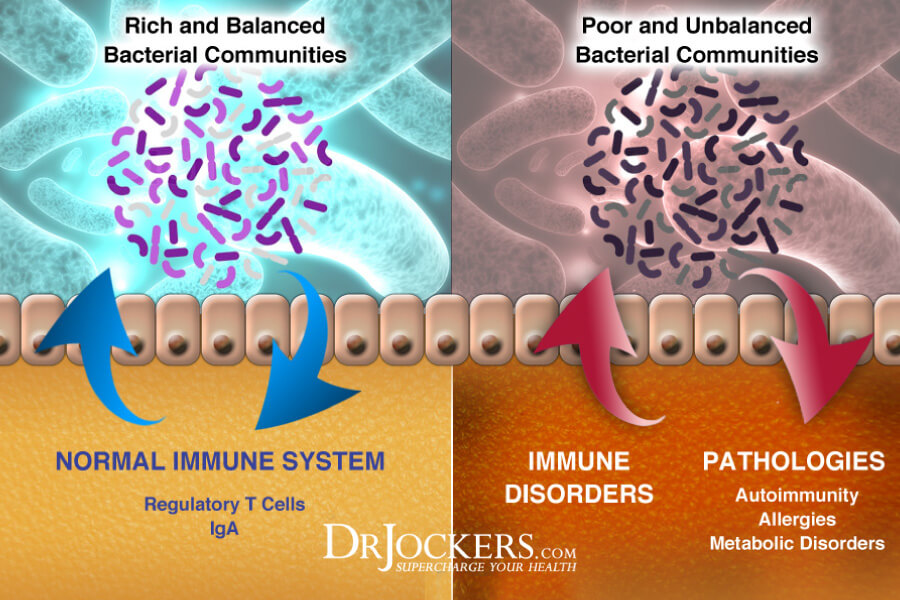
Improves the Resilience of the Gut Lining
A healthy gut lining has an enormous impact on your entire health. A healthy gut helps your digestive, immune, brain, heart, and mental health among other areas. Having a weak gut lining runs the risk of leaky gut syndrome which may lead to digestive problems, inflammation, chronic pain, autoimmune conditions, and other diseases.
Research has found that TRF may improve the resilience of the gut lining. According to a laboratory model organism research on fruit flies, just one month of intermittent fasting improved the gut lining. The study also indicated that time-restricted feeding may result in long-term gut health benefits (9).

Best Strategies For Time Restricted Feeding
You may practice and experience the benefits of time-restricted feeding in a variety of ways depending on your experience, personal health, schedule, and lifestyle. Let’s look at the best strategies for time-restricted feeding.
Simple Fast
The simple fast is the easiest and best intermittent fasting strategy for beginners who are interested in time-restricted feeding. This strategy only involves 12 hours of fasting including your overnight sleep. You can still eat an early dinner then have breakfast 12 hours later. If you are a newbie, start here and move up slowly.
Crescendo or Cycle Fasting
A cycle fast goes a step beyond the simple fast. During the simple fast, the fasting window is 16 hours instead of 12, however, it is only performed 3 times a week. Crescendo fasting is another strategy that uses an alternate day fasting strategy. Crescendo and cycle fasting are particularly beneficial approaches for women who want to benefit from time-restricted feeding without disrupting their hormones.
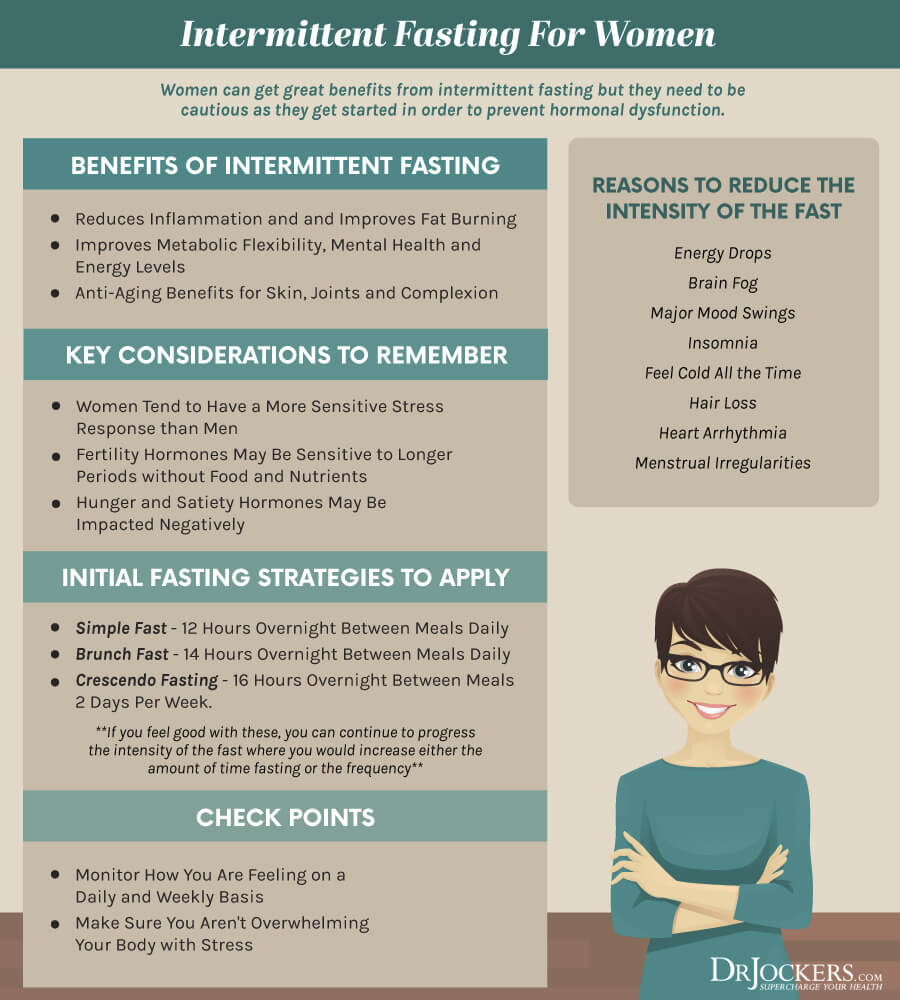
Strong Fast
The strong fast is an extension of the cycle fast. It involves 16 hours of daily fasting. I recommend this form of time-restricted feeding if you already have experience with easier intermittent fasting strategies. Most of my patients tend to report the most benefits on the strong fast.
Warrior Fast
The warrior fast is among the more advanced time-restricted feeding strategies. It has a 19 to 21-hour fasting window. I only recommend it to those who are already experienced with and do well on the warrior fast.
One Day Fast
The one day fast is not surprisingly a one day or a 24-hour fast. You may start your fast after dinner, and make dinner the next day, 24 hours later, your next meal. It is important that you are already experienced with other extended intermittent fasting strategies before trying a one day fast. This method of time-restricted feeding is also a fantastic way to prepare for a 3-day fast or another extended fast.
OMAD
The One Meal a Day Diet (OMAD) is an advanced version of the warrior fast. It is a 23-hour fast, where you have a 1-hour eating window to meet your caloric needs. This is an advanced method of time-restricted feeding that is not for everyone.
Alternate Day Fasting
Alternate day fasting is a restricted-feeding method that prescribes fasting every other day. On fasting days, restrict your meals to a 1 to 2-hour fasting window only. If you want to lose weight, you may restrict your calories by 500 to 1000 calories on fasting days.
You can learn more about simple fasting, cycle fasting, and warrior fasting here, crescendo fasting here, OMAD here, and alternate day fasting here.
Time Restricted Feeding and Partial Fasting
Partial fasting is a fantastic fasting strategy for those who are not yet ready for a full fasting regiment. During a partial fast, you can still consume some foods and meet your nutrient needs while experiencing the benefits of fasting and time-restricted feeding.
If you are interested in partial fasting, you may decide to do a juice fast, consuming only green juices or a bone broth fast, eating only bone broth for 3 to 5 days. You may choose to try a Fasting Mimicking Diet (FMD) for 5 days, restricting your calories to 1,100 calories on the first day and 800 calories from the second to fifth day.
You may try a keto or fat fast focusing on a high-fat (90%+) nutrient-dense diet. You may also try the Daniel fast for up to 21 days consuming a plant-based diet of vegetables, fruits, legumes, nuts, seeds, whole grains, and healthy fats.
Partial fasting itself has many benefits, however, you may combine it with a time-restricted feeding schedule for further digestion and microbiome benefits. You may start out with a 12-hour fast during your time-restricted feeding schedule and eat the foods allowed on your chosen partial fasting regiment.
For example, if you finish dinner at 7 pm, with a 12-hour fast, you can eat breakfast at 7 am. You may extend this fasting window to 14 or 16 hours depending on your experience. Combining time-restricted feeding and partial fasting may help to prepare for a 24-hour fast or a several-day water fast in the future. You may learn more about the benefits of fasting in this article.

If you want to improve your metabolic health and burn fat, improve your brain and overall energy levels…intermittent and extended fasting are incredibly powerful strategies.
That is why I want to introduce you to my best-selling book, The Fasting Transformation. It goes into the most recent scientific research and strategies for implementing intermittent and extended fasting into your life.
This book is the best book on fasting the world has ever seen and I have read them all! It is now, my great honor to present this to you and I am deeply appreciative of your support!
Metabolic Autophagy & Cellular Healing Masterclass
Autophagy is the body’s innate mechanism for deep cellular healing and repair and it helps us reduce the effects of aging, inflammation and cellular damage.
The Nobel Prize in 2016 was awarded to the Japanese researcher Yoshinori Ohsumi for his breakthrough work in helping us understand the process of autophagy and how it works. If you are struggling with your health or desire to optimize your health, activating the appropriate amount of autophagy is a critical component.
This masterclass will give you in-depth video trainings along with image-rich, research-based guides to help you understand the tools and strategies to unlock your body’s dormant healing potential. You will also learn my signature 6-week Metabolic Reset Cycle that will show you how to utilize advanced nutrition strategies for deep cellular healing!
Check out the masterclass here where you will learn my best action steps for optimal healing!
